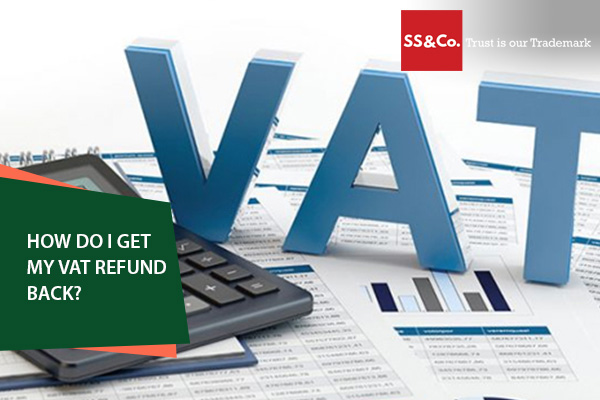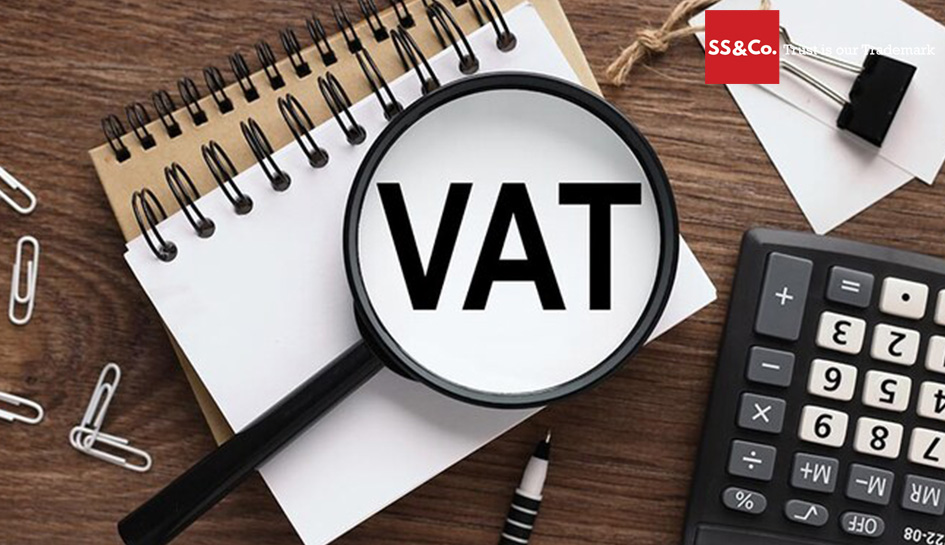How do I get my VAT refund back?

Value Added Tax is an indirect kind of consumption-based tax that is levied in more than 170 countries. Many countries alternatively call it “goods and services tax” (GST), and the two terms are widely interchangeable. VAT is a type of indirect tax since the government doesn’t gather it directly from the consumer; instead, companies collect it when you make any purchase from them, and then they remit it to the government.
Value Added Tax in KSA was initiated in 2018, with an initial rate of 5% but later, during the chaos of the 2020 pandemic, it was increased to 15% due to the economic pressures. KSA widely supports and encourages the taxpayers, along with several incentives, and it also facilitates several consumers, like tourists or foreign entities, to reclaim their VAT on the purchases they make. However, they need to understand the guidelines properly to recover VAT, which they are obliged to reclaim. This blog elaborates step by step on who can claim VAT refunds in Saudi Arabia, the needful documentation, and the e-filing process.
Understanding VAT and Refunds in Saudi Arabia
In KSA, VAT is regulated by the Zakat, Tax and Customs Authority (ZATCA) and applied to most of the goods and services supplied within the Kingdom. Companies collect the VAT for the government and charge this VAT to the customers, which is output VAT, and pay VAT on the purchases, which is input VAT. If the amount of input VAT increases the amount of output VAT during the tax period, the taxpayer is eligible for a refund for the extra amount. There are many refund plans presented by ZATCA for tourists at exit points and for non-resident businesses under joint accords. To foster a fair consumption of tax, the right of refund is a pivotal part of the Saudi Tax system, which also eases the process of double taxation on business inputs.
Who Can Claim a VAT Refund?
1. Enrolled VAT Taxpayers
Any company listed for VAT with ZATCA that shows the input VAT is higher than the output VAT during a given tax period may ask for a refund. This mostly occurs when businesses make a higher number of purchases, take up stock, build up, or export supplies that are rated zero.
2. Non-Resident / Foreign Businesses
Under specific unique circumstances and in case of reciprocity rules, international companies that don’t take part as a permanent enterprise in KSA can reclaim VAT taken on the local expenses; they must meet the requirements of documentation and reciprocity.
3. Tourists and Visitors
Visitors who are not based in GCC can claim their VAT refunds on their applicable purchases they make from the shops that take part in the tourist VAT refund schemes when they export any goods within the given duration.
4. Diplomats and International Organizations
As KSA has signed some international agreements with a few countries, these entities can also get the benefit of it by applying for exemptions or refunds.
5. Government and Non-Profit Entities
Many government bodies and charities are also allowed to claim their VAT refunds; it depends on the nature of each transactional activity, whether it’s taxable or not.
Important Things to Keep in Mind Before Starting
When businesses are initiating the process of VAT reclamation in KSA, they must not forget to emphasize the following checklist,
- They must be registered for VAT as a legal taxpayer to apply for a refund claim under the regional VAT laws. All the registration details must be updated and precise as per ZATCA guidelines.
- All the requisite data must be in correct formats with complete details, readable invoices, and important documents, as ZATCA requires corroborating evidence for approvals of reclaim.
- Businesses applying for VAT must have an e-invoicing system integrated to make sure that your billing system is fully working as per ZATCA legislation
- Refunds are only submitted to ZATCA-registered bank accounts; hence, it is important to provide all the necessary bank data before filing
Step-by-Step Guide for Businesses to Claim VAT Refunds

1. Reconcile VAT Positions
After the tax period ends, reconcile the output VAT and input VAT. If the input VAT surpasses the output VAT, then you must compute the refundable amount that you are obliged to get. Create a transparent reconciliation trail that connects ledger entries to source invoices and contracts.
2. File a VAT Return
Once you have all the required data, you must file for the return electronically through the ZATCA portal for the appropriate tax period. This return must comprehensibly represent total supplies, input VAT, output VAT, and the net standing. For excess input VAT, suggest clearly whether you want to gain it in the form of credit or ask for a refund.
3. Select Refund Option
You will have two possible options: either to carry your extra VAT forward by converting it into credit for future tax liabilities or to apply for a cash amount. Businesses mostly go for cash refunds as they need working capital for business operations, while others mostly pick the option to carry the credits for future utilization.
4. Prepare and Submit Supporting Documents
After choosing to choose your desired option, you must attach the required documents, which mostly include:
- Invoices from the suppliers, along with VAT registration numbers
- Custom documents for imported goods
- Any contract regarding the zero-rated supplies
- Export and transportation data when needed
ZATCA mainly asks for original or certified copies and properly well-maintained evidence and documentation to minimize the time of reclaim processing.
5. For a Cash Refund, Submit a Refund Request
Through the ZATCA portal, you will get the option for a refund request. Fill in the given form with all the accurate references and supporting testimonials, which mainly include reconciliation worksheets.
6. ZATCA Review and Communication
ZATCA evaluates and examines the refund claim thoroughly, and if it meets the eligibility criteria, it approves it. It can also ask for clarifications in case of doubts or open an audit. Businesses must timely request any queries or follow-up requests. It will help to prevent any hindrance or delays
7. Refund Payment and Reconciliation
After getting the approval for refunds, the amount is transferred to the Bank account that is registered with ZATCA. This payment evidence must be saved with your accounting records.
Criteria for Qualification
VAT refunds for Tourists
KSA runs a tourist VAT Refund Scheme, which gives the opportunity for non-Saudi visitors to gain the advantage of getting their VAT reclaimed on the qualified purchases when they leave the Kingdom. The requirements for the eligibility include,
- Making purchases from the stores that participate in the VAT refund Scheme
- Exporting of any goods within the given time span, which is mostly 90 days
- Submission of goods and original invoices at the exit points
Refunds are paid in either cash or credit. As we mentioned earlier, goods must be in their original and unused form for the investigation held by customs.
VAT Refunds for Businesses
Non-resident businesses should assure that their origin country offers reciprocal treatment to Saudi entities. In the case of reciprocity, the foreign company must present
- Documented validation of their business status
- Authentication that the VAT is paid
- Must confirm that they have no permanent establishment in KSA
- They may also have to set forth an official letter from their home tax authority
Why are Refunds Delayed or Rejected?
At times, ZATCA also refuses or holds up the process of VAT reclamation, which generally happens due to the following reasons:
- Data gaps, misinformation, or a lack of compulsory elements
- Invoices gained from unidentified suppliers
- Delay in filing or missed liabilities
- Incompatible records and documents
- Any speculation of fraud due to uncommon patterns
- Not enough required evidence for zero-rated supplies
Best Practices to Speed Up Refunds and Reduce Risk
Businesses must not overlook some critical areas to make certain that they fully meet the needs of the ZATCA VAT refund in Saudi Arabia, such as:
- Build stronger and stronger controls to maintain invoices
- Verify the VAT number of suppliers during the onboarding process
- Deploy the e-invoicing solutions for compliance
- Gather and authenticate all the bank account data ahead of time
- Keep the export documentation at hand
- Hire a local tax expert for any complicated VAT claims
Most of the time, internationals are not skilled or familiar enough with Saudi business practices and the ZATCA taxation system. They find it critical to file VAT returns; it is best to hire a local accounting firm in KSA to handle the intricate process of VAT reclaim.
How SS&CO KSA Helps in Getting VAT Return Back
The stringent Saudi rules, documentation, and ZATCA protocols can be too overwhelming to handle. SSCOKSA simplifies the procedure of VAT refund in Saudi Arabia for both businesses and individuals by presenting expert solutions and step-by-step guidance. With us, you don’t have to stress over the minor details of VAT reclamation. From assessment of eligibility and structuring documentation to submitting data and following up with authorities, we handle it all. Our teams are fully skilled with years of Saudi industrial expertise to not just facilitate you in the process of VAT reclaiming but also maintain a cash flow to keep you always stress-free while you are operating or travelling across the Kingdom. Enjoy the perk of VAT refunds with SS&CO’s informed management and proficient administration.

